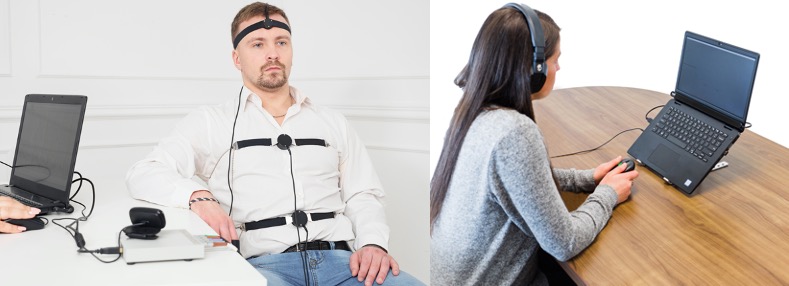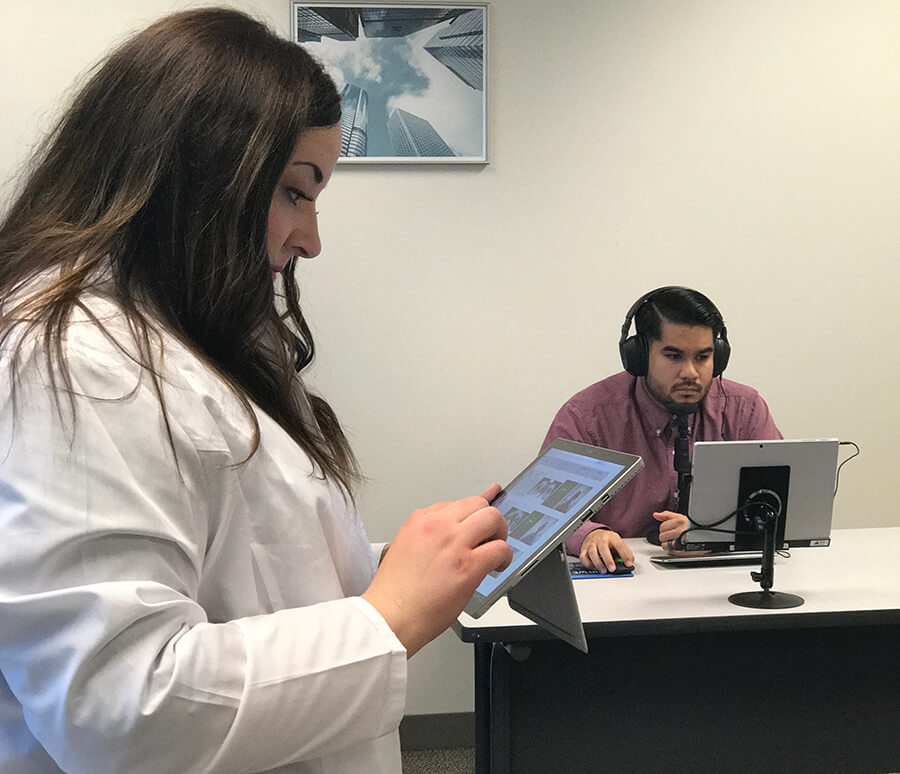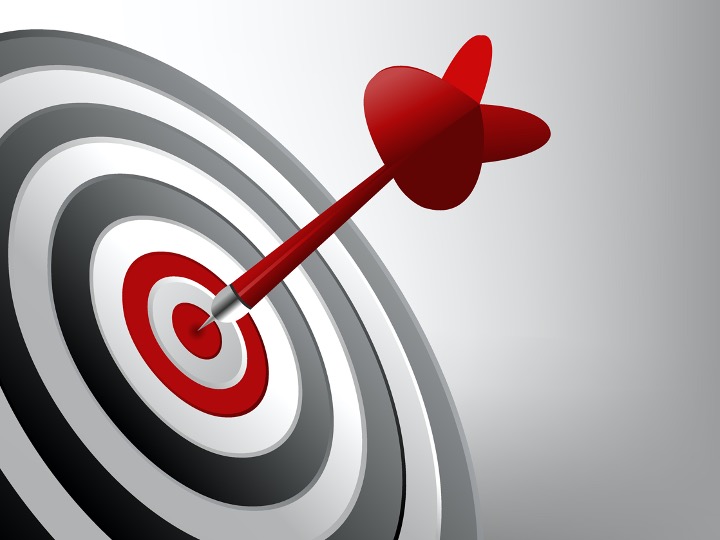Most lie detectors measure changes in physiology. But, there is a better way. EyeDetect can tell if you’re lying just by looking at your eyes.
How Lie Detector Tests Work | EyeDetect

How Lie Detector Tests Work
Most lie detectors are instruments that measure changes in aspects of a person’s physiology while answering questions. The theory is that if a person reacts more strongly to specific types of questions, the person can be determined to be innocent or guilty. If a person’s reaction is considered neither innocent nor guilty, that is called an inconclusive result.
Over the years, lab and field studies have shown that most liars show similar patterns of changes in physical behavior that sensitive equipment can measure. Of course, there are cases where some liars do not show the same physical signs as most. For that reason, lie detectors have margins of error.
This page will focus on two lie detector tests:
(1) EyeDetect® – see photo on right side
(2) Polygraph – see photo on left side


Both devices have been shown through lab and field studies to have greater than 80% accuracy at detecting deception. Unless a lie detector testing system attains 80% or greater accuracy, it is not suitable for use by most security-conscious organizations.
There are various methods in use today for lie detector testing, including personal interviews (lie detection by observation), integrity tests, voice stress analyzers, micro expression software, electroencephalogram, fMRI, and others. To learn more about these, read more here.
EyeDetect
The ocular-motor deception test (now called EyeDetect) was first conceived in 2002 by two scientists at the University of Utah.


It is a computer-based system with a high-definition eye-tracking camera that measures eye behaviors such as pupil dilation, eye movements (fixations), and blink rate during a 15 to 30-minute test during which a person answers True/False questions with a computer mouse.
Eye behaviors and test responses are gathered and then analyzed by a computer algorithm to determine a credibility score.
EyeDetect has many features similar to polygraph because its developers are polygraph experts.
EyeDetect tests are standardized and automated. They are scored without intervention from a human examiner, other than test preparation. No sensors or other devices are attached to the person being tested.
Polygraph
The polygraph instrument was first conceived in the 1920s. Essentially, it is a device that records changes in three types of physiology: (1) cardiovascular activity such as heart rate and blood pressure, (2) respiratory activity, and (3) skin conductance.
The polygraph started out as a simple analog device but was updated in the early 1990s to the digital world and is now software-based.
Cardiovascular activity is measured with a blood pressure cuff like those you have seen at a doctor’s office. The depth and frequency of respiration are measured by tube-shaped sensors attached to a person’s chest and abdomen.
Skin conductivity or resistance, which is also referred to as electrodermal activity, is measured with small electrodes attached to a person’s fingers with a small adhesive or Velcro wraps.
Most polygraph examiners also have a motion sensor attached to the chair used when a person is tested. That sensor detects subtle movements in the trunk, legs, and feet.
Polygraph tests rely on examiners for questioning and test scoring.


Test Format
The recording of physiological changes and question responses are gathered during a part of the EyeDetect and polygraph test. Both systems include a pre-test, which is followed by the lie detector test. Both tests include practice questions to get the examinee familiar with question format.


Note: The person to undergo a lie detector test is called an “examinee.”
Before testing with EyeDetect, the examinee watches an audio-visual presentation of the test topics and is given instructions about “how” the test will be carried out.
Likewise, during a polygraph exam, the examinee is given instructions by the examiner about “how” the test will be carried out and test questions are reviewed to ensure the examinee understands the scope of the test.
Both tests could include a pre-test procedure called a stimulation or acquaintance test. This simple test serves as a demo of the device’s accuracy to give the examinee confidence in the system.
Both tests include questions about the relevant topic. See the “Test Questions” section below for more details.
Test Protocols
There are two test protocols used in EyeDetect and polygraph tests: (1) screening tests and (2) diagnostic tests.
Screening tests are those conducted in the absence of a known incident or allegation and are general in nature. They may ask the examinee about a variety of target behaviors or can target a single-issue of concern. Target behaviors could include drug use, theft, bribery, fraud, domestic violence, etc.
Screening tests are often used as a pre-employment filter of job applicants or as a follow-up test for current employees.
Diagnostic tests are conducted when there is a known incident or allegation and include questions specific to a known incident, such as a bank robbery, sexual assault, or homicide. These types of tests are often used in criminal or civil cases.
Test Questions
EyeDetect and polygraph tests include “relevant” questions, which deal with the target behavior or issue of interest.
Examples:
• Have you used illegal drugs in the past 90 days?
• Did you steal any money from the 1st National Bank last week?
There are also “comparison” questions unrelated to the target behavior or issue of interest. These are used to help determine a baseline reaction when the examinee is telling the truth or provide an alternative set of questions to challenge the examinee’s goal of passing the test.
If a person does not react strongly to comparison questions but does react strongly to relevant questions, both systems might give a recommendation the person is lying.
Psychology of Testing
In lie detector testing, examinees are primarily concerned with passing the test. If a person fails a lie detector test, they could lose their job, not get hired, go to jail, get divorced, etc.

A truthteller will be very concerned about following instructions and answering all questions truthfully. A truthteller doesn’t want to fail a test for any reason unrelated to telling the truth.
A liar will be very concerned about appearing innocent and answering the relevant questions with minimal physiological reaction. Each person is motivated to pass the test.
In both tests, where there is a greater physiological response to relevant questions than to comparison questions, the examinee is presumed to be deceptive.
If the examinee shows a greater physiological response to comparison questions than to relevant questions, the examinee is presumed to be innocent.
If little or no difference is observed in the examinee’s reaction to relevant and comparison questions, the test outcome could be considered “inconclusive.” That means the person’s reaction appeared to be neither innocent nor guilty.
Test Scoring
EyeDetect tests are scored by a computer algorithm. Data related to eye behaviors and test responses are used to determine a creditability score within minutes of test completion.
Polygraph tests are scored by examiners who have undergone training to read and interpret physiological reactions. Polygraph instruments can also rely on algorithms to assist the examiner.
Test Accuracy
The accuracy of EyeDetect and polygraph have been measured in many lab studies under controlled circumstances with “ground truth.” By definition, ground truth is a concept mentioned in terms of lab studies where researchers know with certainty which lab study participants have been assigned to an “innocent” or to a “guilty” condition.
Those assigned as guilty are asked to participate in a simulated or mock crime during the lab study, while those assigned as innocent participants commit no mock crime. Both groups are tested on the same topic.
Lab study results for EyeDetect and polygraph have been published in scientific journals and peer-reviewed in many cases.
In spite of the results found in scientific studies, specific physiological reactions may not be unique to truthtellers or liars. A truthteller may be anxious, nervous, or distracted when tested and can show signs of a reaction normally seen in guilty persons.
If a truthteller fails a test, that is called a false-positive (FP) result. If a liar passes a test, that is called a false-negative (FN) result. In the case of EyeDetect and polygraph, there are margins of error. But both have been shown to minimize FPs and FNs.


Countermeasures
Some examinees attempt to “fool” the system by implementing countermeasures. A countermeasure is an action taken by a person to defeat or distort the test.

Examples of countermeasures include physical movement, mental exercise, or the use of drugs. The goal of using countermeasures is to alter physiological changes to try and affect test results.
In the case of EyeDetect, eye behavior changes observed during questioning are related to increases in cognitive load and are involuntary. They cannot be controlled.
In addition, the fast pace of questions administered during an EyeDetect test make implementing an effective countermeasure challenging.
Summary
There are various methods in use today for lie detector testing, including personal interviews (lie detection by observation), integrity tests, voice stress analyzers, micro expression software, electroencephalogram, fMRI, and others. To learn about these, read more here.
Other than EyeDetect and polygraph, these other methods are either less than 80% accurate, extremely costly, or very invasive or uncomfortable for the examinee.

Converus (“with truth”) provides scientifically validated credibility assessment technologies that help protect countries, corporations and communities from corruption, crime and threats.

